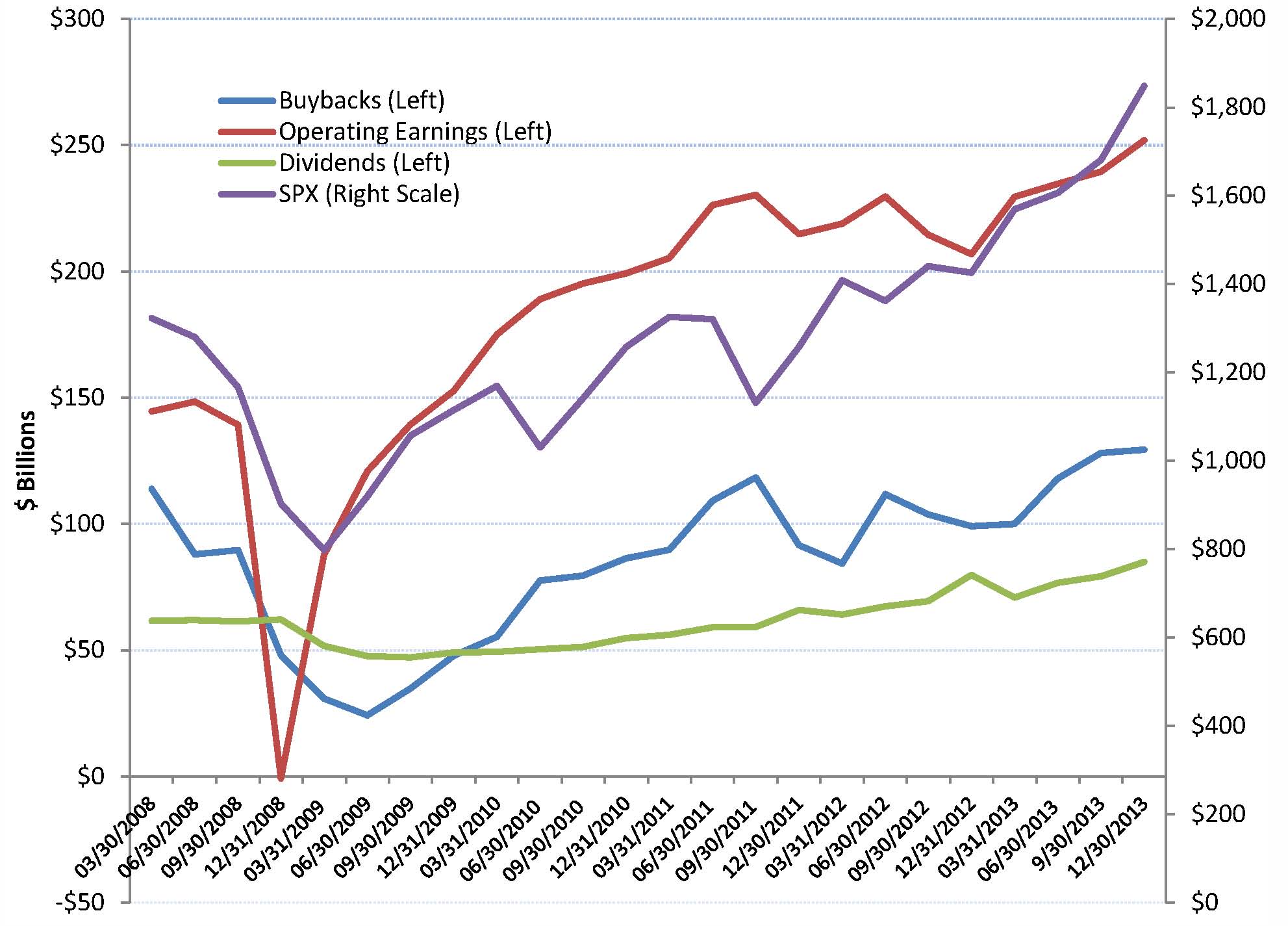March 2014 – Monthly Commentary
March 2014
In last month’s update we speculated that the message from the Federal Reserve could soon become less accommodative as the new central bankers came to terms with the substantial liquidity sloshing through the financial system. Just a week after publication, the Fed’s message took a decided turn at Chair Yellen’s first post-FOMC press conference. The change in tone was delivered in three parts. The first was the announcement that the Fed would continue to taper the size of the open market bond buying by another $10 billion. While that was the consensus view, there were a minority of pundits that thought the weather-related weakness would force them to pause. The second surprise came in the FOMC interest rate forecast. The committee members each present their interest rate forecasts in the form of a histogram, with each represented as a dot corresponding to the expected Fed Funds rate at a specific date. Surprisingly, all but two of the members forecasted that Fed Funds would be higher in 2015, with a weighted average forecast of 1.13%. That was higher and sooner than was forecast just six weeks earlier. The most surprising change, however, came during the question and answer period when Chairwoman Yellen suggested that the first rate hike would come six months after the end of quantitative easing. Investors were jolted from the “low rates for an extended period” mentality into the realization that the Fed now expects to raise rates in the foreseeable future. Barring any unanticipated calamity, it now seems likely that quantitative easing will end on October 29 and the first rate hike will occur six months later, at the conclusion of the April 30th FOMC meeting. Moreover, given the forecast of the FOMC members, Fed funds will likely end 2015 at 1% or above.
Ironically, in a subsequent speech three weeks later, Yellen attempted to put the rate hike “genie” back in the bottle. Speaking in Chicago before a Community Reinvestment conference, her speech was highly sympathetic and included a reference, by name, to three individuals that have suffered through the plight of unemployment during the recession. The humanization of unemployment was a highly unusual tactic for a Fed Chairman. Historically, the mandate of the Fed is to be a countercyclical macro force, easing policy when economic growth slows and tightening as it accelerates, agnostic to the woes and fortunes of the individual. In an ironic twist, it was reported the next morning that two of the three named had criminal records. It’s unfortunate that Yellen resorted to political tactics to communicate policy, as it only served to undo the credibility that she had gained just a few weeks earlier.
We’ve discussed the Fed’s Fixed Interest Rate Reverse Repo (FIRRP) operations on several occasions, in the monthly review, and during our in-person client meetings. Since the newest round of operations was launched last September, the size and participation has steadily grown. The FIRRP is effectively a one day Federal Reserve “bill” available to a select list of 125 financial institutions and money market funds, and currently has a fixed yield of 5 basis points per annum. As a result of the government’s money printing exercise, there is a surfeit of cash in the financial system and the demand for short maturity fixed income securities has become acute. The demand has been so great that the yield to maturity of Treasury bills falls into negative territory with consistent regularity. To offset that imbalance, the Fed issues up to $5 billion FIRRP’s per investor. As last year came to an end, issuance of the one day security ballooned to more than $100 billion before settling back into a daily volume of approximately $60 billion. Going into the end of the first quarter, the excess cash was even more acute than year-end as evident in the $242 Billion in FIRRP issued on the last day of March. Despite nearly a quarter Trillion dollars of collateral provided by the government, Treasury bill yields again fell close to zero. For now, the Fed seems to be managing the excess liquidity imbalance with FIRRP. But the larger issue is the enormity of the liquidity in the system and how it will be managed as the economy accelerates. Our early speculation is that the FIRRP will replace Fed Funds as the policy setting interest rate. Indeed, the Fed has suggested that they could manage the money supply by adjusting the rate on the security as they see fit. With interest rates at 5 basis points and Treasury Bills yielding 0.00%, the FIRRP is an effective tool. However, as interest rates normalize, sopping up nearly a trillion dollars of liquidity rapidly becomes an unwieldy and expensive undertaking. Each one percent rise in interest rates would cost the U.S. Government nearly 8 billion dollars. That’s assuming that the Fed maintain the current $5 billion cap per institution. Should they need to increase the cap to meet heightened liquidity, which seems likely, the cost could be even greater. We expect the Fed would quickly come under intense criticism for incurring such cost, especially since they are likely to be sitting on a multi-trillion dollar portfolio of Treasury and Mortgage-backed securities that are valued well below their purchase price. When that day arrives the brilliance that quantitative easing is perceived as being is not likely to look so brilliant.




